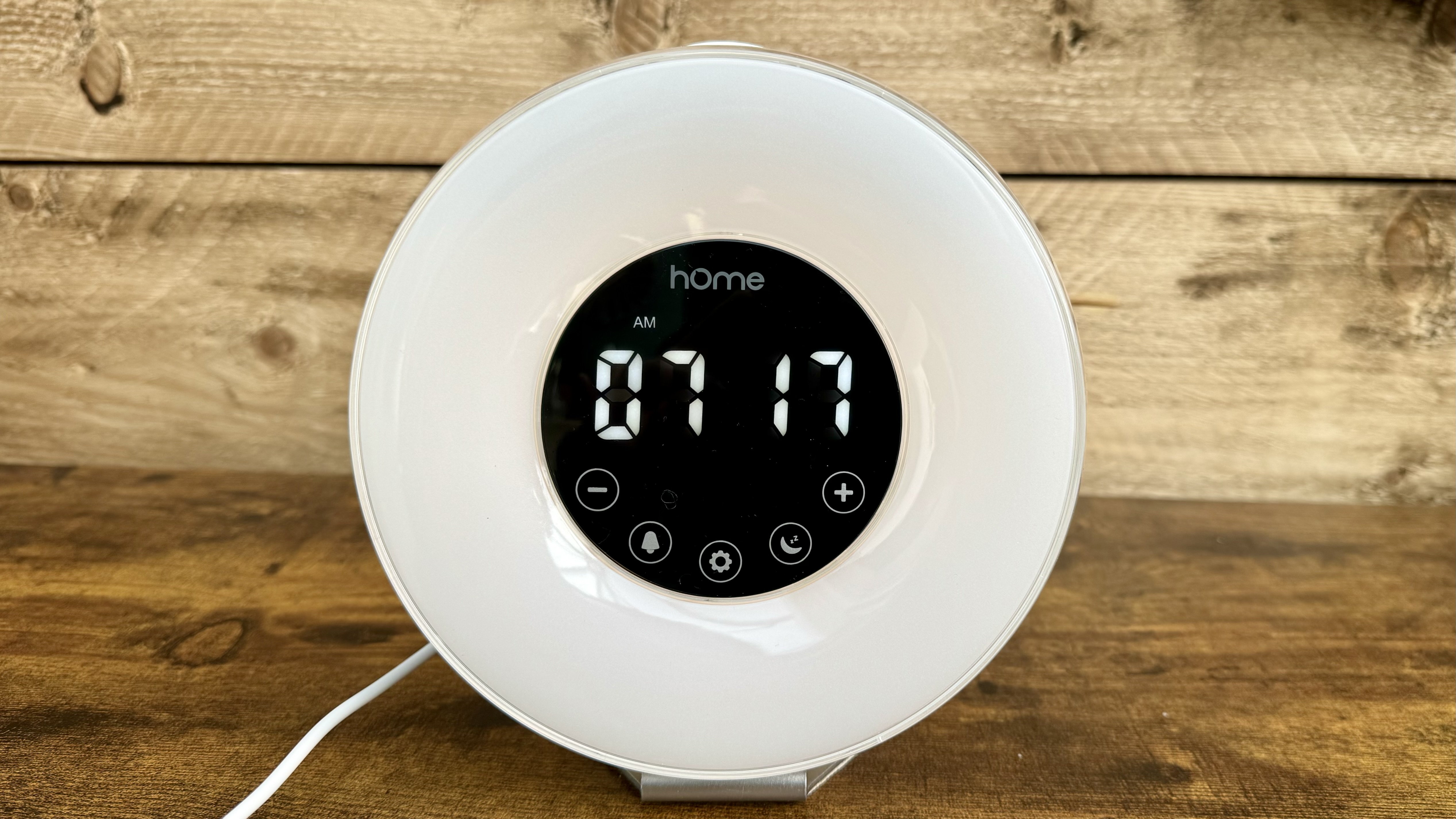
Sunrise alarm clocks might be just what the (sleep) doctor ordered at this time of year, helping you transition from bright summer mornings to dark ones where waking up is harder. The gradual light of a body clock is designed to mimic dawn, helping our bodies to naturally respond to the simulated sunrise to wake up easier.
I've spent the past week testing a popular budget sunrise alarm clock, the HomeLabs Sunrise Alarm Clock, to see if it really does work. Here I look at how easy it is to set up, what features it offers, and whether it's effective or not at helping me to wake up easier on darker mornings.
Of course the first port of call for improving your sleep quality is investing in the best mattress for your body and sleeping position, but there are other ways to ensure you get better rest – and wake up feeling brighter. A sunrise alarm clock is one of them, so here's my experience of using this Amazon best-seller for a week...
How the HomeLabs Sunrise Alarm Clock works
Dark mornings are irritating enough without being dragged from sleep by that traumatizing iPhone alarm sound. This is where sunrise alarm clocks come in, waking you up with a simulated sunrise and gentle sound of your choice.
The HomeLabs Sunrise Alarm Clock lights up 30 minutes before the programmed alarm time. During this time, the light increases to maximum brightness before the alarm sounds.

A sunrise alarm clock uses light instead of sound to wake you up. It mimics the gradual brightening of the sun in the morning, helping you wake up more gently and naturally.
The HomeLabs clock is a fantastic budget option for anyone curious about using a sunrise alarm clock. At $22/£16.99 the HomeLabs clock is hundreds of dollars/pounds cheaper than other sunrise alarm clocks on the market.
It has a built-in radio (which can be set as your alarm sound if that’s your kind of thing), a bright array of coloured lights for when it's not in use as a sunrise clock and can be used as a nighttime reading light thanks to its sunset functionality.
Setting up my HomeLabs Sunrise Alarm Clock
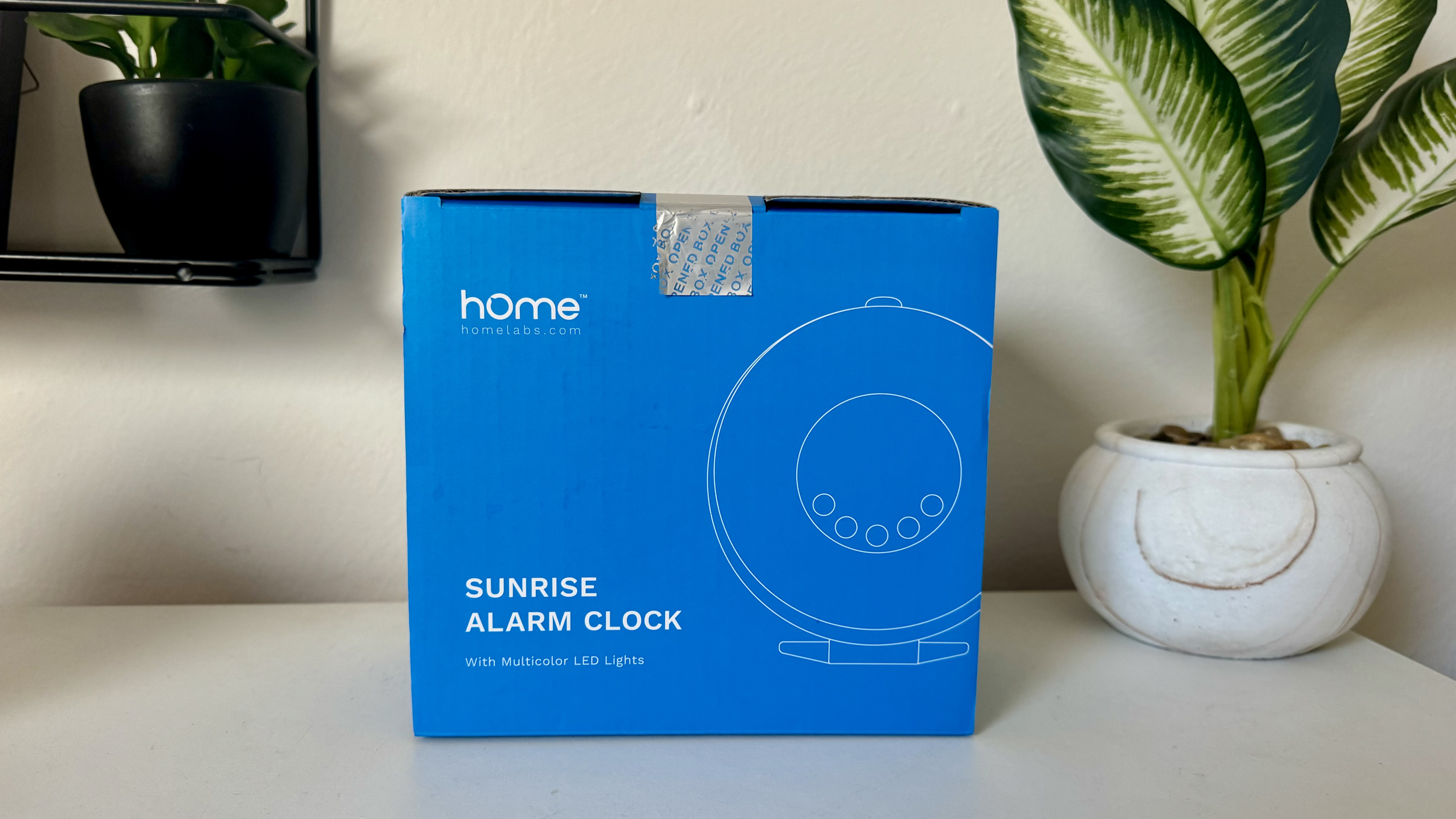
The alarm clock comes with a clear, detailed instruction manual and is operated via touch sensitive buttons, making it a great technical alarm clock choice for the less tech-savvy.
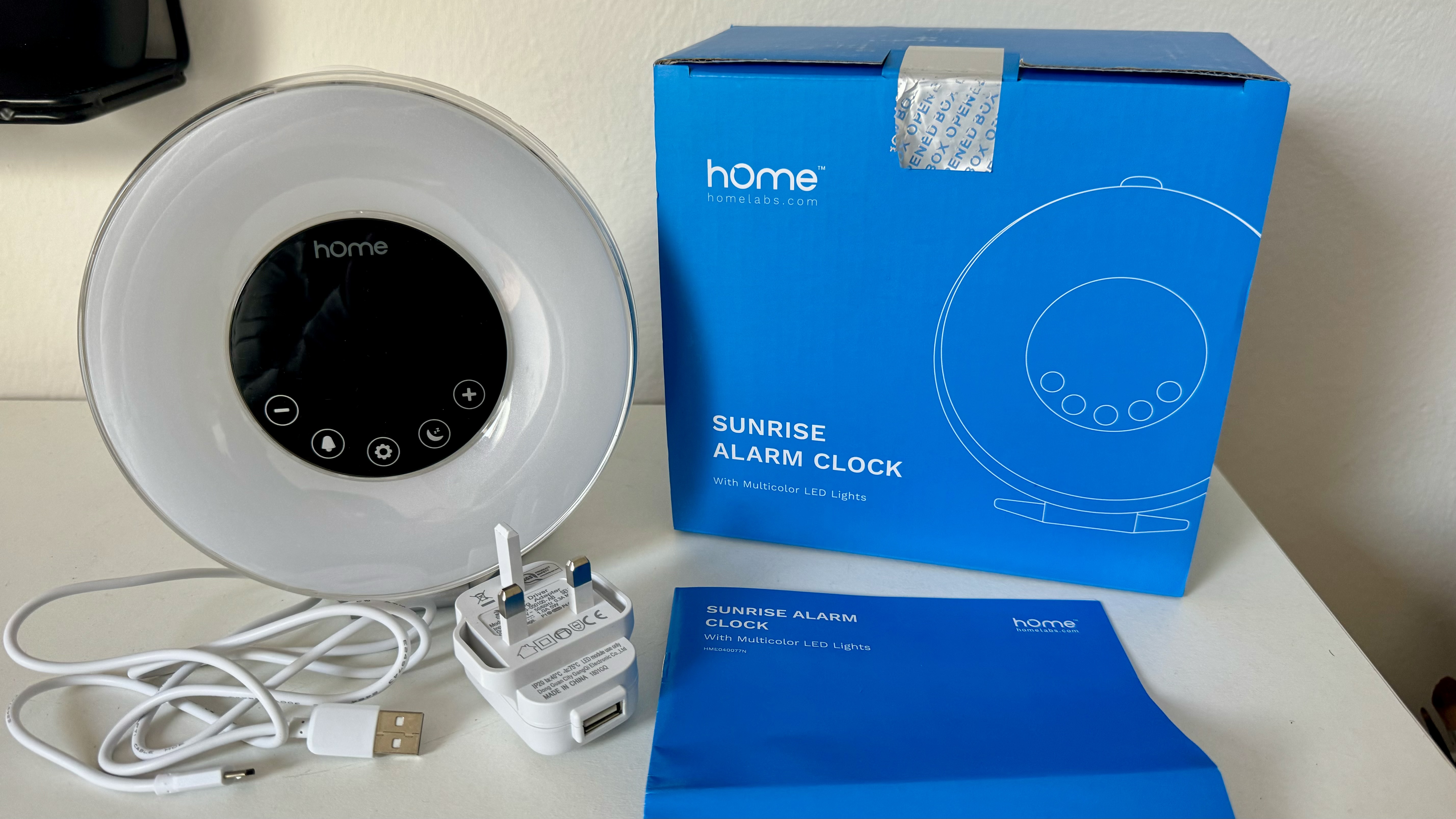
Setting up the HomeLabs Sunrise Alarm Clock is an easy four step process. You simply connect it to power with a USB-port plug, and set the current time, alarm time and alarm tone via touch sensitive buttons on the clock front.
There are seven alarm sounds to choose from, ranging from nature sounds to FM radio. Although the nature sounds, such as birds and ocean waves, are basic on this budget alarm clock, they are an improvement on the jarring sound of most mobile alarm tones.
Cautious that the alarm wouldn’t wake me up, I set my phone alarm too on the first night of using it ('my sunrise alarm clock didn’t go off’ somehow sounds akin to the ‘my dog ate my homework’ kind of excuse). But for the rest of the week I have enjoyed using the HomeLabs Sunrise Alarm Clock as my wake up call.
Does it work or is it a waste of money?
As a deep sleeper, I haven’t been waking up when the initial light switches on – lighter sleepers might find this enough to pull them from sleep. But as it gradually gets brighter over the course of 30 minutes, I feel like it has been waking me up subconsciously.
I have been waking up immediately when the alarm sounds, whereas before I would sometimes sleep through or snooze alarms. With my bedroom already lit slightly by the HomeLabs clock I have found it much easier to wake up and feel more alert.
I usually sleep with my blind slightly open to allow natural light to wake me up in the morning, but as the mornings are now dark at my wake up time, the HomeLabs has done a good job of simulating that lost light.
I have tried other, more expensive sunrise alarm clocks – such as the Hatch Restore 2 – that have brighter lights and are more efficient at waking me up with just light rather than sound too.
Can a sunrise alarm clock help you fall asleep too?
The HomeLabs Sunrise Alarm Clock also offers a sunset simulation feature. You touch the half moon and zzz button to turn this setting on and the light will gradually dim until it turns off over the course of 15 minutes (or if you double press this button it will turn off over 30 minutes).
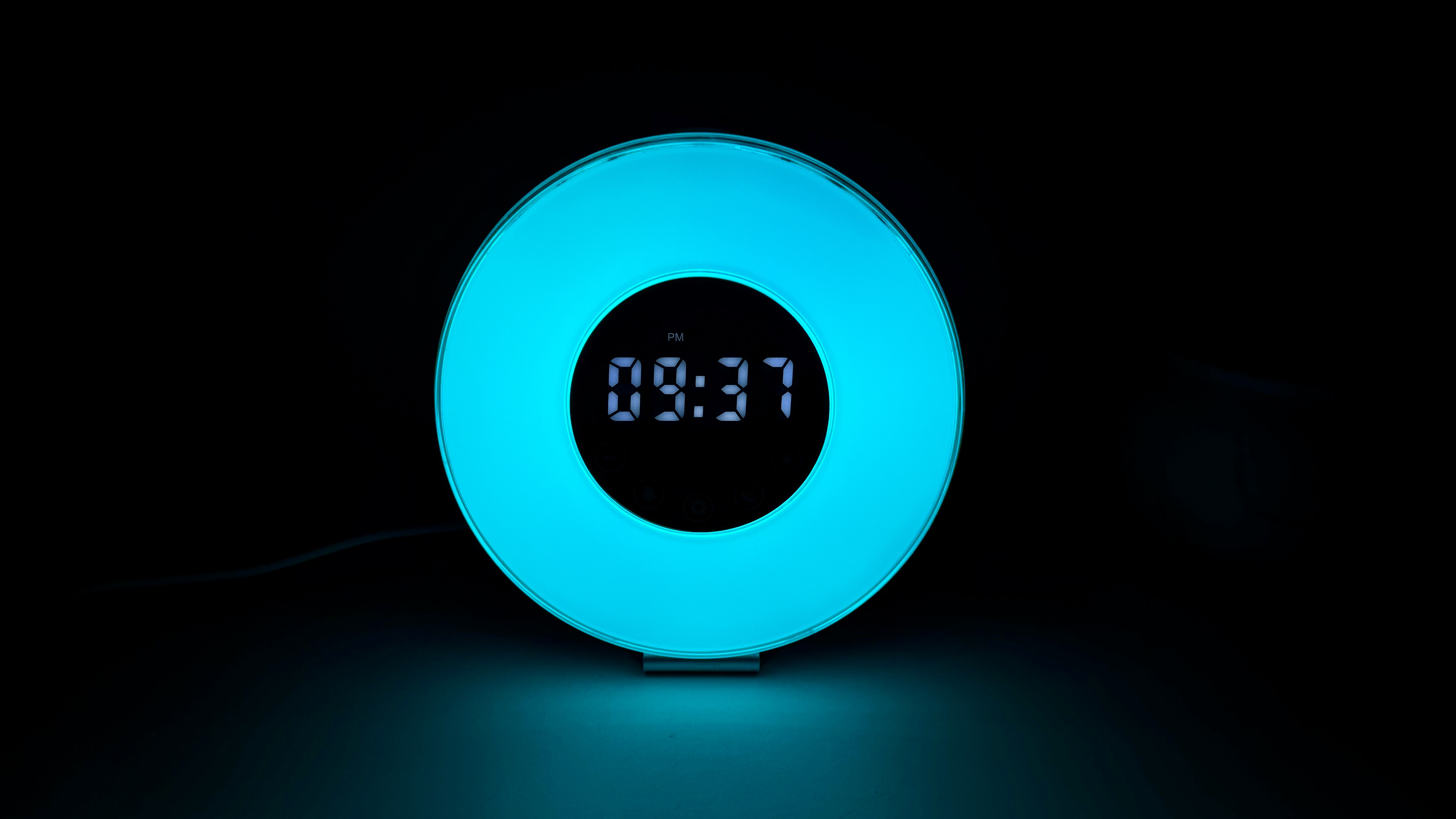
I have found this gentle light to be a handy reading lamp in place of harsher lamps or overhead lights. I often start drifting off to sleep when I read before bed and find that getting up or moving to turn off my light wakes me up, counteracting the soothing, sleepy effect of reading.
Even if I drift off with my book in hand (which I have been known to do many times) I can rest assured that the alarm clock will turn off automatically instead of my manual bedside lamp wasting electricity throughout the night.
HomeLabs Sunrise Alarm Clock: Final thoughts
There’s nothing I love more than a summer morning, waking up early to natural sunlight. I always dread waving goodbye to those idyllic mornings as sunrise gets later and later. So, my sunrise alarm clock has been a blessing this week.
The HomeLabs Sunrise Alarm Clockdoesn’t claim to do anything miraculous, like cure SAD as other sunrise lamps do. It is a simple bedside light/alarm clock that dims and brightens to help you sleep and wake up, and it effectively does the job it intends to.
At such a budget price point, the HomeLabs body clock is a good one to try before you invest in a more sophisticated model.
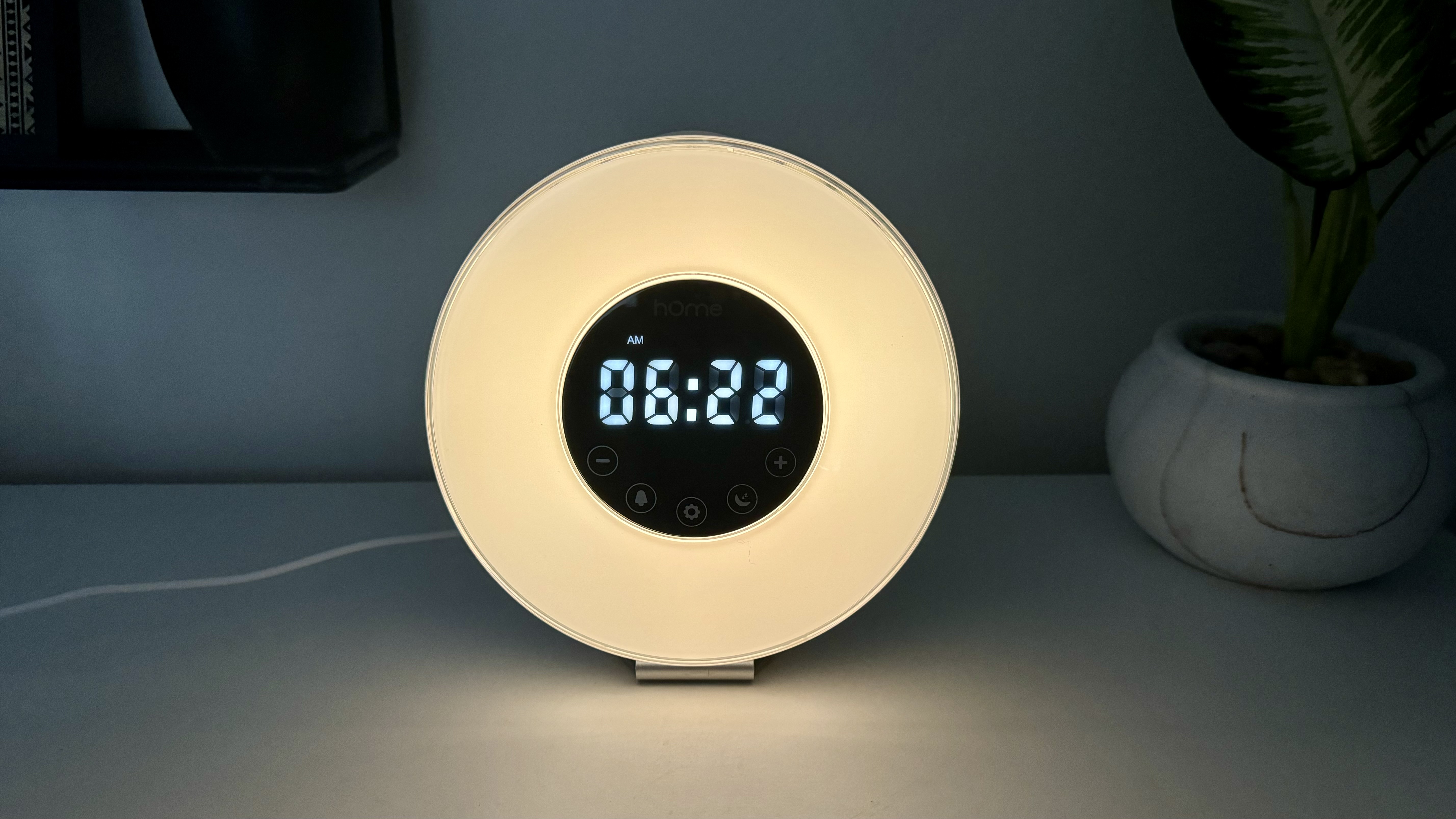
It is also a good option for younger sleepers, helping you drag them out of bed on school mornings. With a choice of multi coloured mood lights from turquoise to red and violet making it even more appealing to kids.
If you’re looking for a clock that will have you up and raring to go through just light rather than sound too, I would advise choosing a more expensive model with greater capability of simulating a natural sunrise.
That said, considering its low price tag, the HomeLabs clock does a great job and has some nice additional features like the radio, coloured lights and bedtime setting.
In short, sunrise alarm clocks are one of the better sleep trends on social media (simulated sunrise in; mouth taping out), and the HomeLabs clock is a great budget-friendly model.
Better sleep tips for fall and winter
1. Invest in your bed
Investing in a mattress suited to your body and sleep style – be it one of the best mattresses for back pain or best mattresses for side sleepers – will make sure you are comfortable and supported during the night, allowing you to sleep peacefully without any aches and pains waking you.
2. Stick to a consistent routine
Routine really is the best way to achieve good sleep and getting up early on dark mornings. Maintaining a consistent sleep schedule, where you wake up and go to bed at the same time every day, helps to regulate your sleep and wake cues.
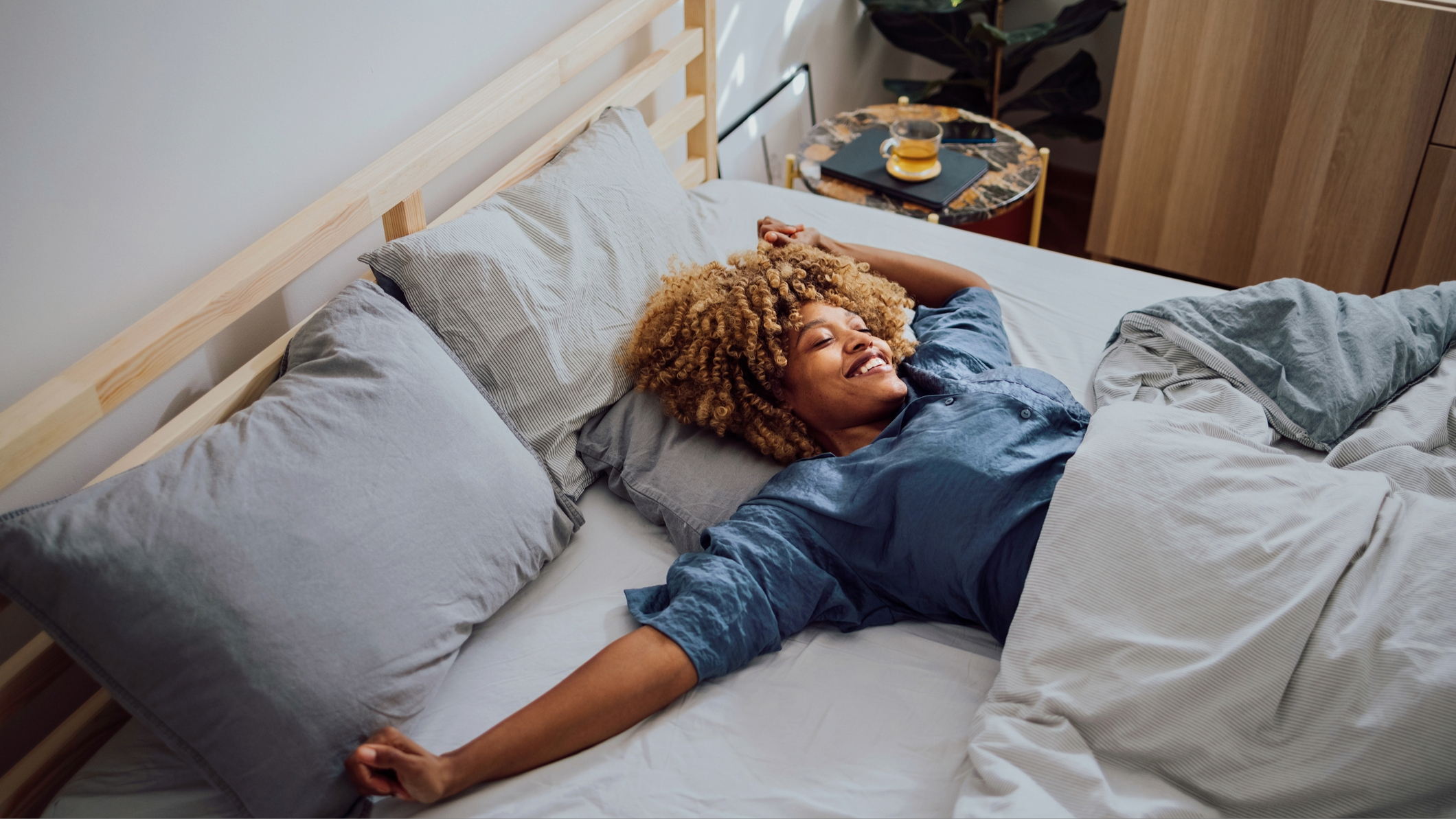
3. Get outside
Exposing yourself to as much natural sunlight as you can during winter days will help you regulate your circadian rhythm, improving your sleep quality and morning alertness. Try to get out for a walk in natural light, sit by a window, or step outside to drink your morning coffee.







